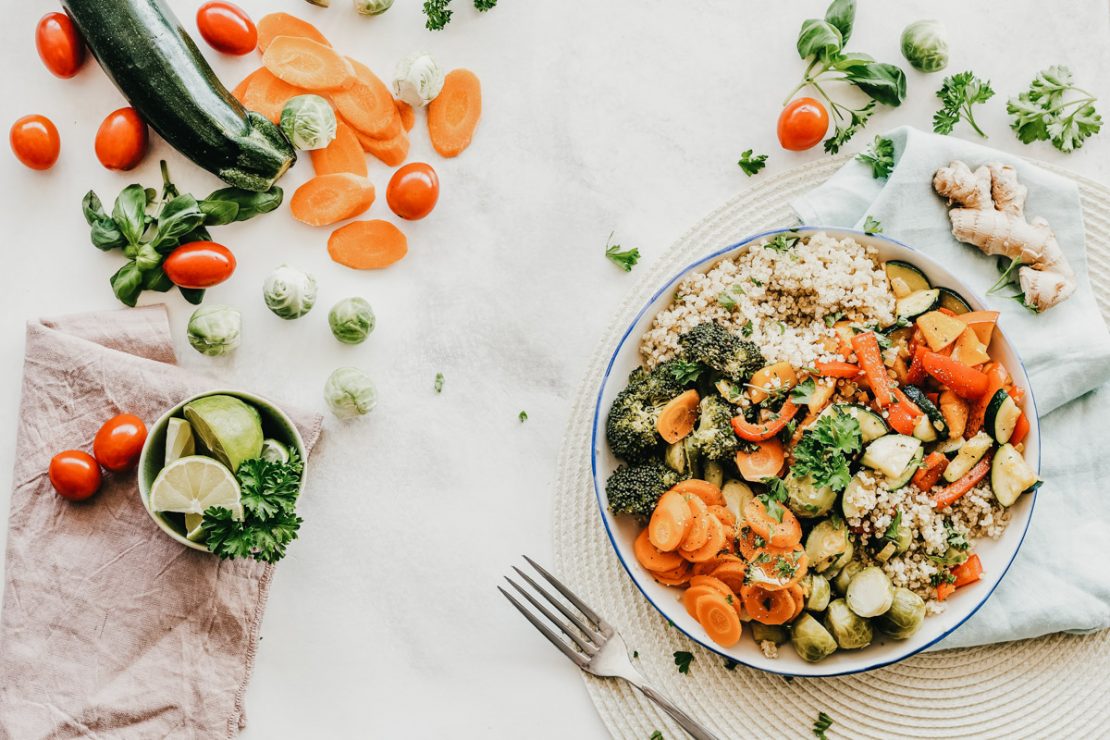
Cultivating Clarity With Foods and Herbs
Most of us agree that a clear, peaceful mind is desirable. There are few of us who wish for an internal state that is characterized by turbulence and discord. Of course, cultivating and maintaining inner clarity is often easier said than done. However, we can take steps to create conditions for greater clarity and harmony within our own mental and emotional landscape. This post will explore foods and herbs for supporting a clear, or sattvic, mind.

What is Sattva?
First of all, what is sattva and why does it matter? According to yoga and ayurvedic philosophy, all of nature is characterized by three gunas, or qualities: sattva, rajas, and tamas.
Sattva is the quality of illumination, purity, and lightness. It leads to clarity, harmony, and serenity. Rajas is the quality of mobility and activity. Someone who is predominantly rajasic will be restless, tense, agitated, and even aggressive. Tamas is the quality of darkness and inertia. Without tamas, we would not fall asleep at night. However, a predominance of tamas in a person may be reflected as delusion, sloth, dullness, and even deceit and cruelty (Iyengar, 1979).
It is clear from these descriptions of the three gunas that a luminous, clear sattvic mind is desirable. That said, sattva, rajas, and tamas are all necessary and are simply inherent in nature. In addition to clarity and lightness of being, we need activity and willpower (rajas), and we also need some degree of heaviness and earthiness. As I mentioned earlier, tamas allows us to go to sleep when we need to and it keeps us from floating off into the ether, so to speak.
Still, many of us wish to cultivate a sattvic mind and clarity of being. This is a normal and healthy desire—to be a more clear reflection of our higher selves on a day to day basis is a worthy aim. So, which herbs and foods support a sattvic mind?
Herbs for a Sattvic Mind
When I think of herbs for cultivating clarity, nervines come to mind. However, not all nervines are considered sattvic. Sedative herbs, for instance, though useful in some situations, are generally not regarded as sattvic. Herbs that promote a clear, calm mind are more likely to be considered sattvic. Here are a few examples.
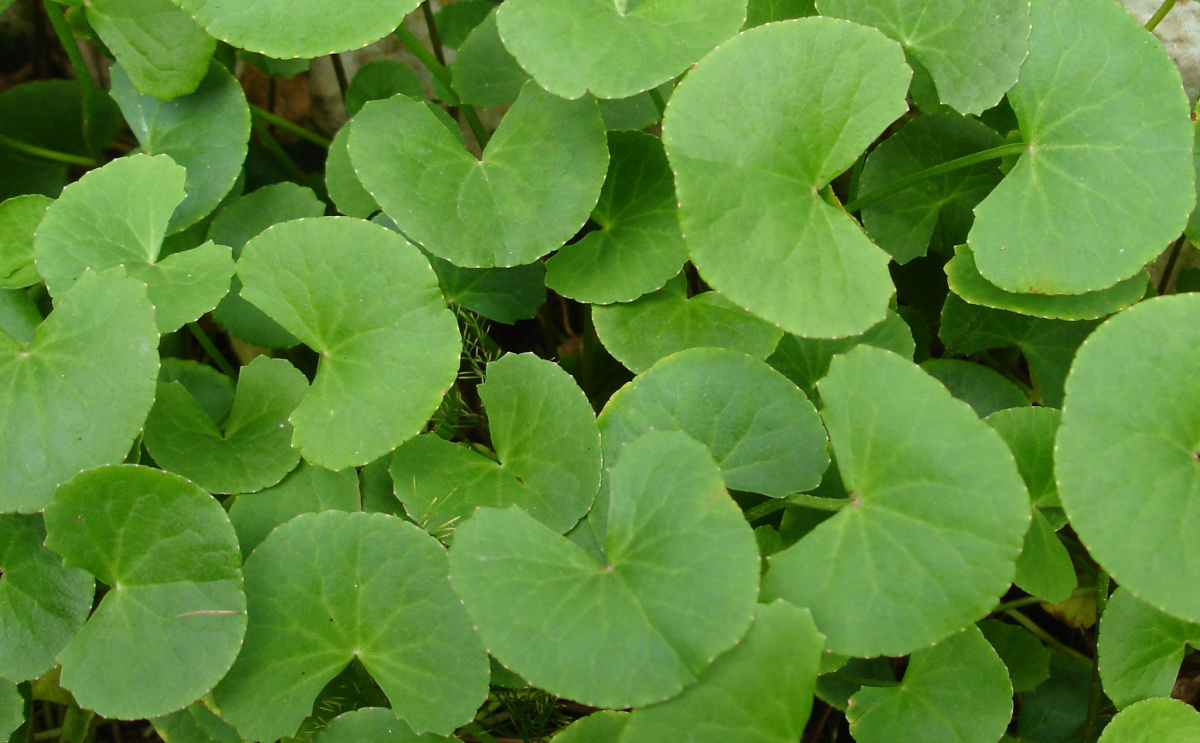
Gotu kola (Centella asiatica)
When I think of herbs for a sattvic mind, gotu kola (Centella asiatica) is one of the first plant allies that surface. Interestingly enough, while working on this article, I opened the book The Yoga of Herbs by David Frawley and Vasant Lad to a random place, and gotu kola is where I landed. So let’s begin there!
Gotu kola has a bitter taste, a cooling energy, and is overall nourishing and rejuvenating— especially for a tired, overworked mind (Frawley & Lad, 2001). Most foods and herbs that cultivate sattva have a mildly cooling energy. This low-growing leafy plant likes to spread its tendrils and produces rounded, green leaves that when eaten fresh taste a bit like very bitter spinach. I have a gotu kola plant that sits at my window and I like to take a little nibble here and there! Gotu kola likes sunlight and lots of water; it even does well as a houseplant as long as it gets plenty of sunshine and moisture.
Turn to gotu kola to bolster mental stamina, clarity, memory, and longevity (Frawley & Lad, 2001). In fact, some say that elephants have such a great memory because of all the fresh, wild gotu kola they eat! This cooling, bitter green may be taken fresh, dried, tinctured, in capsules, or infused in ghee. It is also very useful for stubborn skin conditions such as acne or eczema (Frawley & Lad, 2001). I think of gotu kola particularly for calming an overheated pitta brain. However, it also calms the nerves, which is quite helpful for vata dosha, and can reduce sluggishness or dullness caused by excess kapha (Frawley & Lad, 2001).
Ayurvedic practitioner and author Vishnu Dass (2013) underscores how gotu kola helps to nourish a sattvic mind, “Gotu kola has the ability to enhance sattvic qualities in the mind and purify the nadis (subtle nerve channels), thus being a valuable herb for spiritual practices like yoga and meditation” (p. 217). Thus, sattvic herbs such as gotu kola may even be helpful in supporting one’s contemplative practices.
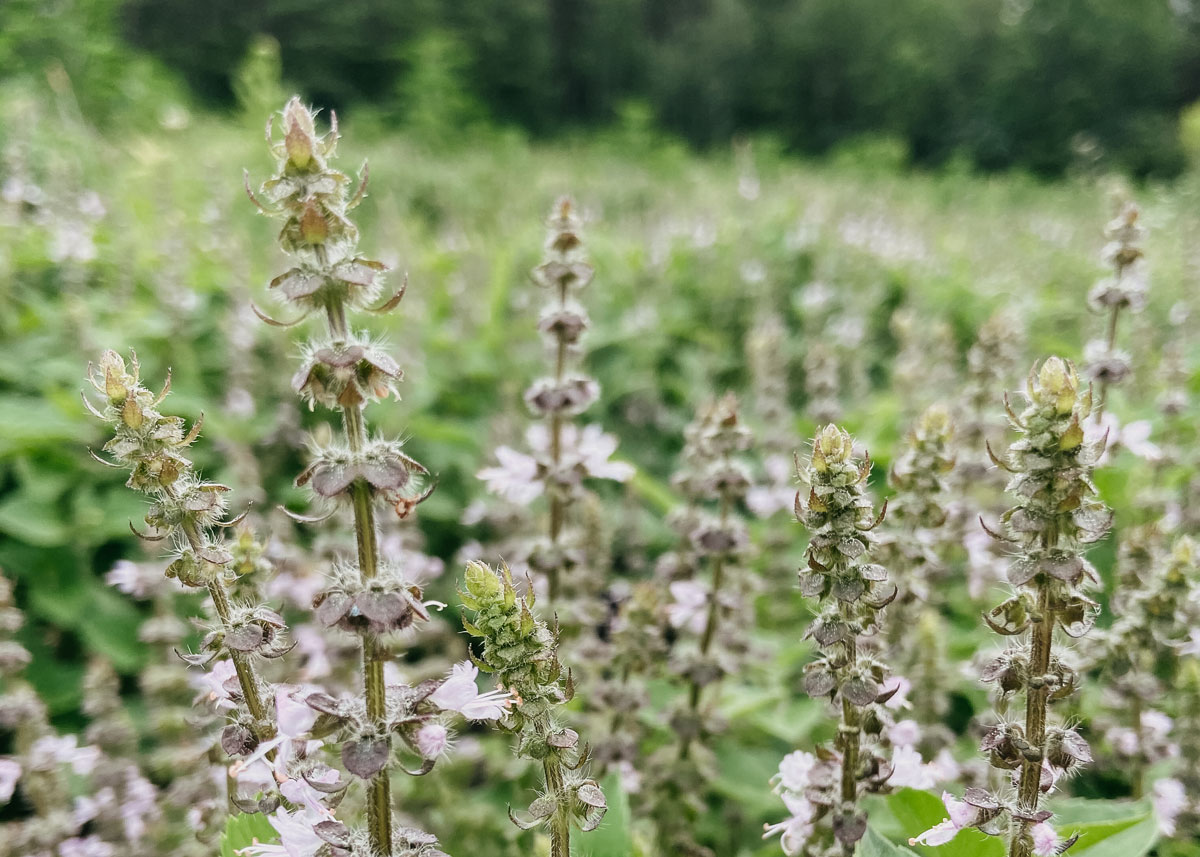
Tulsi (Ocimum tenuiflorum)
Tulsi, or holy basil, is another lovely herb for supporting a sattvic mind. This tasty, aromatic leaf is warming, so it is better suited for the cooler times of year or for those with a cool constitution (vata and kapha types). However, pitta types can enjoy tulsi in moderation or combined with cooling herbs such as gotu kola, hibiscus (Hibiscus sabdariffa), or rose (Rosa spp.).
Tulsi is respected for its ability to cultivate clarity when taken internally and also imparts similar benefits when enjoyed as a house plant in the home or temple. Nicknamed the “incomparable one,” tulsi is highly regarded in Ayurveda and has many applications. It helps clear the mind of sluggishness and helps relieve deep-seated emotions held in the lungs and heart region (Dass, 2013). The lungs and upper chest area are ruled by kapha dosha, so this plant may be a particularly good ally for those with a kapha constitution or kapha imbalance.
There are many ways to enjoy tulsi. You can keep it as a houseplant, enjoy it as a tincture, or make tulsi tea with the dried leaves. In the masala chai recipe in my other Herbal Academy post, Herbal Tea Blends for Morning, Midday, and Night, you have the option of using tulsi leaves instead of black tea. Or, something I like to do is to add just a dash of dried, powdered tulsi to my morning chai made with CTC Assam (black tea) leaves, enjoying tulsi in addition to the flavors of a traditional black tea masala chai.
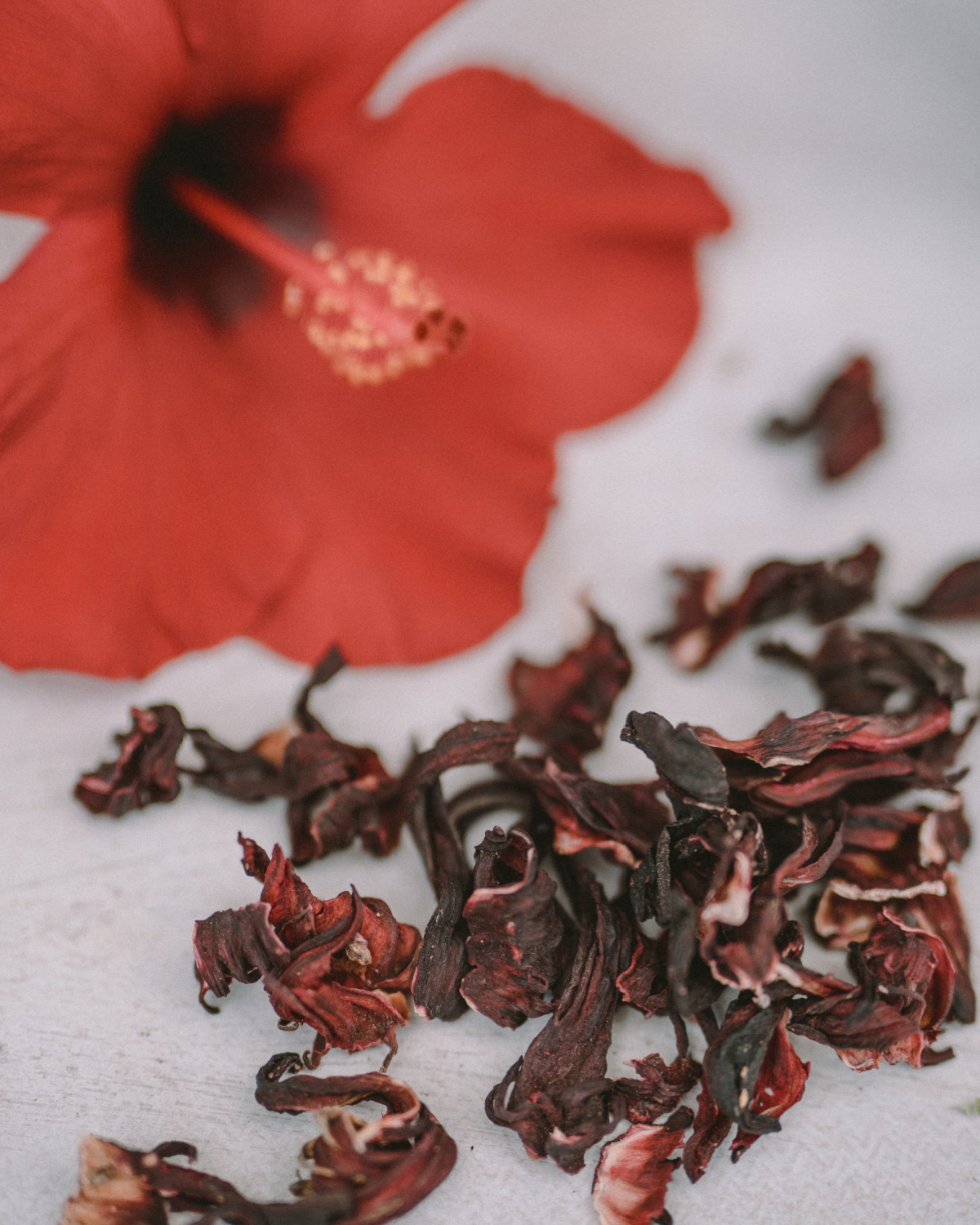
Hibiscus (Hibiscus sabdariffa)
In Ayurveda, hibiscus flowers are typically used for imbalances with menstruation, urinary difficulties, and for purifying the blood. These beautiful flowers are considered cooling and astringent and therefore are generally indicated for issues involving excess pitta dosha. That said, in Hindu traditions, the flowers are also used in special devotional ceremonies, called pujas, and are connected to Ganesha, the elephant god who is considered the remover of obstacles (Frawley & Lad, 2001). Hibiscus is said to support clarity and focus in meditation (Frawley & Lad, 2001).
With its cooling energy and appealing color, hibiscus tea is a fine choice for simmering down, taking a slow breath, and supporting both a cool head and a cool body during the summer months.
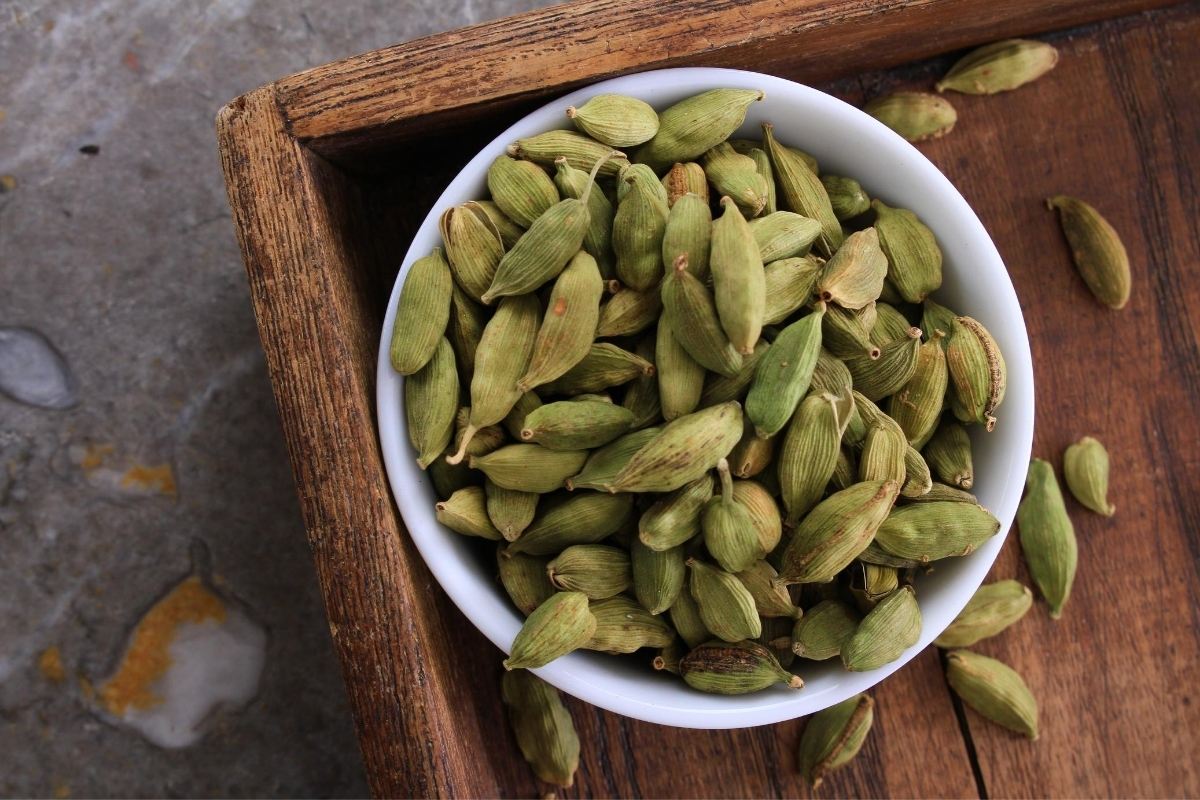
Cardamom (Elettaria cardamomum)
More than a tasty cooking spice, cardamom seed offers a sense of joy, clarity, and gentle mental stimulation (Frawley & Lad, 2001). It is considered sattvic and “is particularly good for opening and soothing the flow of the pranas in the body” (Frawley & Lad, 2001). (Prana being a vital life force and subtle energy).
In addition to refreshing the mind and imparting sattvic qualities, cardamom is a much-loved digestive aid. Adding a pinch of cardamom to dairy foods, sweets, and other heavy foods helps stimulate the agni so that the digestive process is more efficient. This tasty aromatic spice does wonderfully well as a spice for ice cream or warmed milk, and it is a key ingredient in masala chai.
Foods for a Sattvic Mind
If one wishes to cultivate a sattvic mind, attention to diet and lifestyle are indispensable. Here I will share some dietary tips for cultivating clarity. That said, the saying, “what comes out of your mouth is more important than what you put in it” rings true in my heart. Practicing truth and nonviolence as well as choosing the right foods and herbs can have an important impact on our lives. And, in addition, foods and herbs can assist us in cultivating clarity, luminosity, and sattva.
“The sattvic diet was originally for the practice of yoga and for the development of the mind” (Frawley, 2000, p. 100). A sattvic diet consists of vegetarian foods that are light, fresh, and mildly cooling. These foods help bring lightness of being and clarity of mind. That said, a purely sattvic diet may not be nourishing and strengthening enough for everyone (Frawley, 2000), but this is not an all-or-nothing decision. You may choose to eat mostly light, fresh, plant-based foods and also add in a bit of animal protein or some more warming spices per the needs of your body.
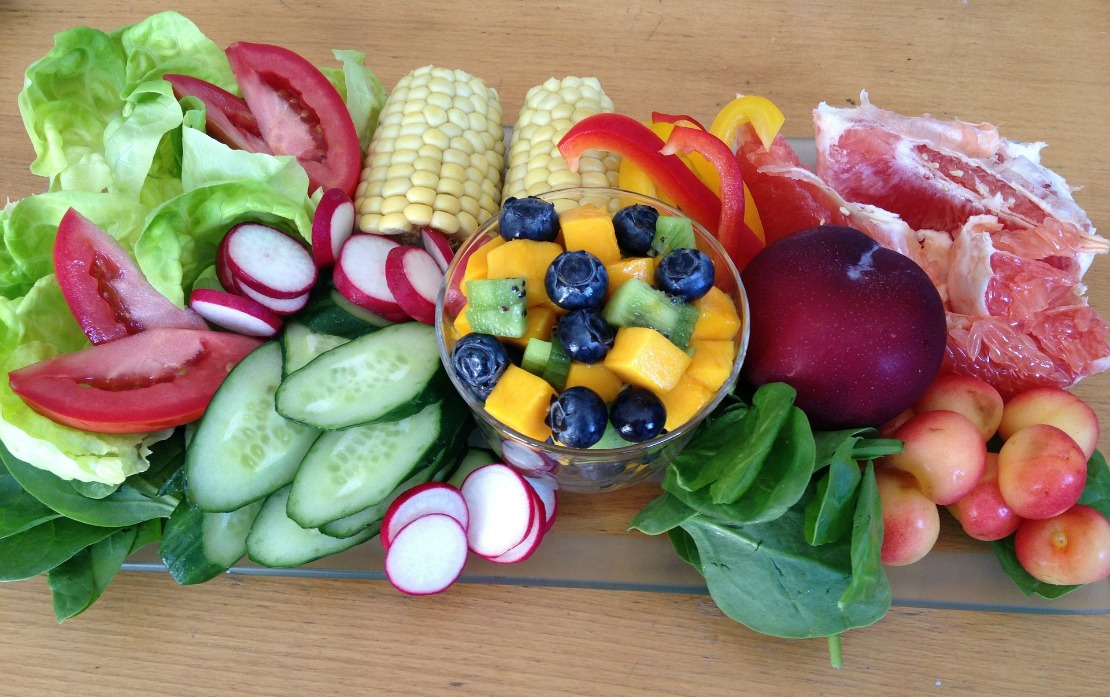
Sattvic Foods: What’s On The Menu?
Fresh fruits and vegetables are generally considered sattvic (Frawley, 2000). Food that is organic and that has undergone minimal processing is considered rich in prana and is more sattvic than canned, frozen, or highly processed foods. Vegetables can be eaten raw depending on the time of year and one’s digestion and constitution. Ayurveda generally recommends eating cooked foods over raw. However, I find that in the summer, if my digestion is fine, I can eat about 1/3 raw vegetables (such as lettuce and leafy greens) and 2/3 cooked. For a sattvic diet, it is best to lightly cook vegetables with just a small amount of oil and mild spices. You can steam your veggies and add just a bit of oil such as ghee or olive oil.
Fresh, organic fruit is a staple in a sattvic diet. Ayurveda teaches that fruit contains a high amount of ether (Frawley, 2000) which is good for cultivating clarity and lightness of being. However, for those with a strong vata constitution, they need to be careful not to create too much ether as this can lead to a sense of instability, light-headedness, and other vata-related issues. These individuals will need to be sure to also eat plenty of cooked grains, cooked vegetables, and can even cook their fruit along with mildly warming spices such as cardamom and cinnamon.

Kitchari For Sattvic Eating
Whole grains, mung beans, most nuts and seeds, and ghee are also included in the diet for a sattvic mind (Frawley, 2000). The ayurvedic food kitchari can serve as a staple in sattvic eating. You can learn more about kitchari and how to make it in my other Herbal Academy post, Ayurvedic Guide to a Spring Cleanse. This simple porridge essentially consists of mung beans, basmati rice, spices, and sometimes vegetables and ghee. You may wish to focus on sattvic spices when making kitchari and other soups, stews, and porridges. Those spices include ginger (Zingiber officinale) rhizome, cardamom (Elettaria cardamomum) seed, cinnamon (Cinnamomum spp.) bark, turmeric (Curcuma longa) rhizome, fennel (Foeniculum vulgare) seed, and coriander (Coriandrum sativum L.) seed and leaf (Frawley, 2000). In addition, saffron (Crocus sativus), though an aphrodisiac, is considered one of the best spices for clearing excess pitta (heat) from the blood and it is deemed sattvic (Frawley & Lad, 2001).
In Closing,
I think it is helpful to remember that eating for a sattvic mind need not be an all-or-nothing endeavor. There are many foods, herbs, and practices that can help cultivate clarity. Foods and herbs that are wholesome, light, and refreshing can serve as supports in leading a lifestyle that emphasizes truth, clarity, and luminosity. At the same time, we need some degree of heat and stimulation, just as we need a certain amount of heaviness and earthiness—there is no light without darkness.
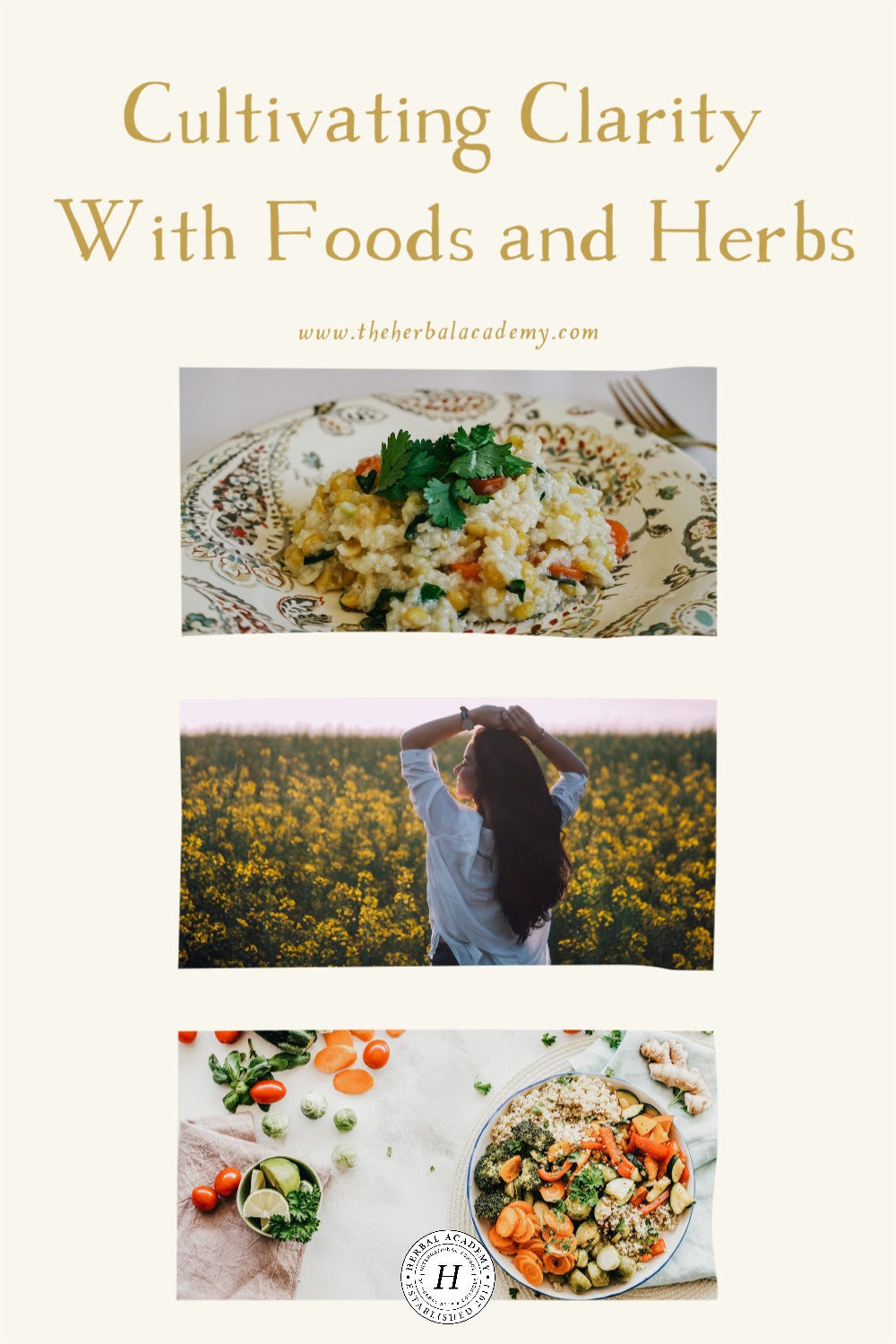
REFERENCES
Dass, V. (2013). Ayurvedic herbology East & West: A practical guide to ayurvedic herbal medicine. Lotus Press.
Frawley, D. (2000). Ayurvedic healing: A comprehensive guide. Lotus Press.
Frawley, D. & Lad, V. (2001). The yoga of herbs (2nd ed.). Lotus Press.
Iyengar, B.K.S. (1979). Light on yoga. Schocken Books.








